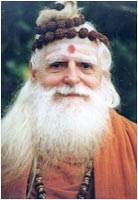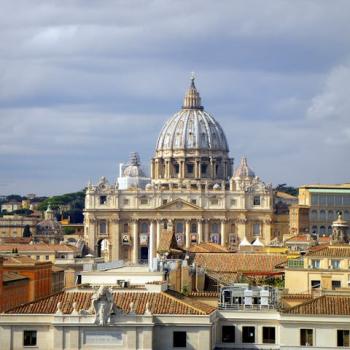The vratyastoma ceremony ("vow pronouncement"), dating back to the Tandya Brahmana of the Rig Veda, is performed for Hindus returning to India from abroad and for those who have embraced other faiths. One finds a wide range of converts in India, from communities such as the Syrian Malabar Christians, who adopted Christianity shortly after that religion's founding, to the Muslim converts of a thousand years ago, to Indians converted in the last few generations. Especially in the case of many recent converts, the conversion is often superficial, and the return to Hinduism is a simple matter of ceremonial recognition. In other cases, complete reeducation is required.
There are many organizations in India active in reconversion, some motivated by fears of non-Hindu dominance in regions once all Hindu. The Masurashrama in Mumbai specializes in reconversions through the shuddhi shraddha, purification ceremony, bringing dozens of converts back into the Sanatana Dharma each month. Masurashrama founder, Dharma Bhaskar Masurkar Maharaj, set a strong precedent in 1928 when he organized the purification rite for 1,150 devotees in Goa who had previously converted to Christianity. About the same time, Swami Agamanandaji of the Ramakrishna Mission in Kerala reconverted hundreds to Hinduism, as did Narayana Guru. More recently, two South Indian ashramas -- Madurai Aadheenam and Kundrakuddi Aadheenam -- have brought thousands of Indians back into Hinduism in mass conversion rites. Since the early 1960s, the Vishva Hindu Parishad has reportedly reconverted a half-million individuals through shuddhi ceremonies all over India. The VHP activities are extremely distressing to Christian missionaries who, according to an analysis published in Hinduism Today (Feb. 1989), spent an average of $6,000 to win over each convert.
When such souls do return, it is the duty of established followers to shepherd them, blend them in, and assist at every opportunity to make them successful members of the international extended family of our venerable faith. It is vital that reconversion campaigns are followed up with continuing education, social improvement, community temple building, and priest training to create fully self-sustaining groups. It is one of the duties of the Hindu priesthood to stand guard at the gates of Sanatana Dharma and perform the sacred ceremonies for worthy souls to allow them entrance for the first time or reentrance into the Hindu fold in case they strayed into an alien faith and now desire to return. The priesthoods of all four major denominations of Sanatana Dharma -- Saivism, Vaishnavism, Smartism, and Shaktism -- are performing the duty, empowered by the Gods, of bringing devotees back into the Hindu fold through a congregation of devotees.
Swami Tilak aptly noted the present trend in Hinduism:
Multitudes of serious and sincere seekers of Truth are knocking at our doors. We cannot disappoint them, keeping our doors closed. We will have to open our doors and accord a hearty welcome to our new visitors. Whoever comes to us is ours, and we have a duty to make him feel quite at home with us. We must not suffer from superiority complex. Nor should fear or suspicion mar our magnanimity. While in Indonesia, we were pleased to see that the local Hindus had started taking non-Hindus in. We shall have to do the same all over.... Marriages of mixed nature are unavoidable. Whether we like it or not, we will have to make room for them. We cannot lose a person only because he or she has got married to a non-Hindu. We should rather try to bring a Hindu's non-Hindu spouse into our fold. In Trinidad, Guyana, Suriname, and Jamaica, the pandits wisely do not perform the marriage of a mix-couple until the non-Hindu partner agrees to embrace Hinduism as his or her religion (Hindu Vishva, July/August, 1985).
This is Chapter Five of the online book, How to be a Better Hindu, published by the Himalayan Academy, and is reprinted with permission.
 Satguru Sivaya Subramuniyaswami (1927-2001), addressed as "Gurudeva" by his followers, was born in California and adopted Saivism as a young man. He traveled to India and Sri Lanka where he received initiation from Sage Yogaswami of Jaffna in 1949. He began teaching in 1957 in San Francisco, California, founding one of America's early Hindu temples. In the 1970s he established a Hindu monastery in Kauai, Hawaii and founded the magazine Hinduism Today. The author of many books on Hinduism and metaphysics, Subramuniyaswami was one of the most prominent faces of Hinduism during the last two decades of the 20th century. To protect, promote and preserve Sanatana Dharma, he founded four major institutions that continue today: Saiva Siddhanta Church, Himalayan Academy, Hindu Heritage Endowment, and Hinduism Today magazine.
Satguru Sivaya Subramuniyaswami (1927-2001), addressed as "Gurudeva" by his followers, was born in California and adopted Saivism as a young man. He traveled to India and Sri Lanka where he received initiation from Sage Yogaswami of Jaffna in 1949. He began teaching in 1957 in San Francisco, California, founding one of America's early Hindu temples. In the 1970s he established a Hindu monastery in Kauai, Hawaii and founded the magazine Hinduism Today. The author of many books on Hinduism and metaphysics, Subramuniyaswami was one of the most prominent faces of Hinduism during the last two decades of the 20th century. To protect, promote and preserve Sanatana Dharma, he founded four major institutions that continue today: Saiva Siddhanta Church, Himalayan Academy, Hindu Heritage Endowment, and Hinduism Today magazine.




